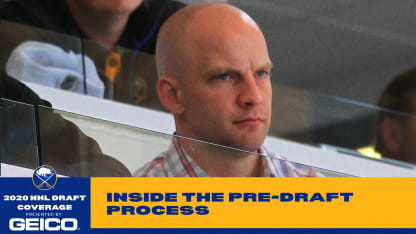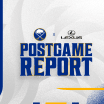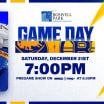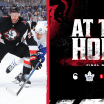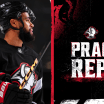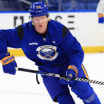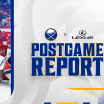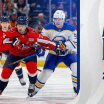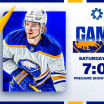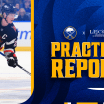When the Sabres make their selections next Tuesday and Wednesday, it will mark the culmination of an extensive process spearheaded by Crowe and director of analytics Jason Nightingale, who also serves as the team's assistant director of scouting.
The undertaking included a complete re-visitation of the player pool. Scouts were assigned groups of players based on analytics and other information that had been previously collected, with a minimum number of video viewings mandated for each player.
Once the initial viewings were complete, detailed meetings were held with Crowe, Nightingale, and scouts to weigh takeaways from games, projections for a what a player could become, and data-driven insights on a player's impact. Scouts were then asked to conduct a second wave of analysis to answer why their findings may or may not be true.
The idea was to build a system of checks and balances to explain the "why" behind a player's performance.
"We're not really asking anymore if they control the game, because we can measure that," Nightingale said. "We're not asking, 'What is their offensive impact?' because we can measure that.
"It's, how are they doing that? And the way that they do it, how will that translate to the next level? I think that's how the two interact, the scout and the information."
Nightingale, who has been with the organization since 2013, said the amount of data available is better than ever before. That is true league-wide, though in this case the timing coincides with a mandate both from Adams and ownership to implement analytics into the team's scouting strategy.
"We rely on our scouts to make sense of data and vice-versa," Crowe said. "Figuring out if there's some variable that might be misrepresenting either side has been good. I think our guys are getting a grasp of it more and more as we go."
The primary goal, from an amateur scouting perspective, is simple: Select the players who best project to make an impact at the NHL level. Within that objective exists a goal to find players who fit Adams' organizational vision - namely, high-character individuals who are invested in reaching their potential.
Given the timeline that typically exists between a player being drafted and turning pro - which often takes up to three years or longer - questions of positional fit are less pressing.
"What we're trying to figure out is how to acquire the best assets," Nightingale said. "So, I think that's why our priority is trying to find players who project to the NHL level."
